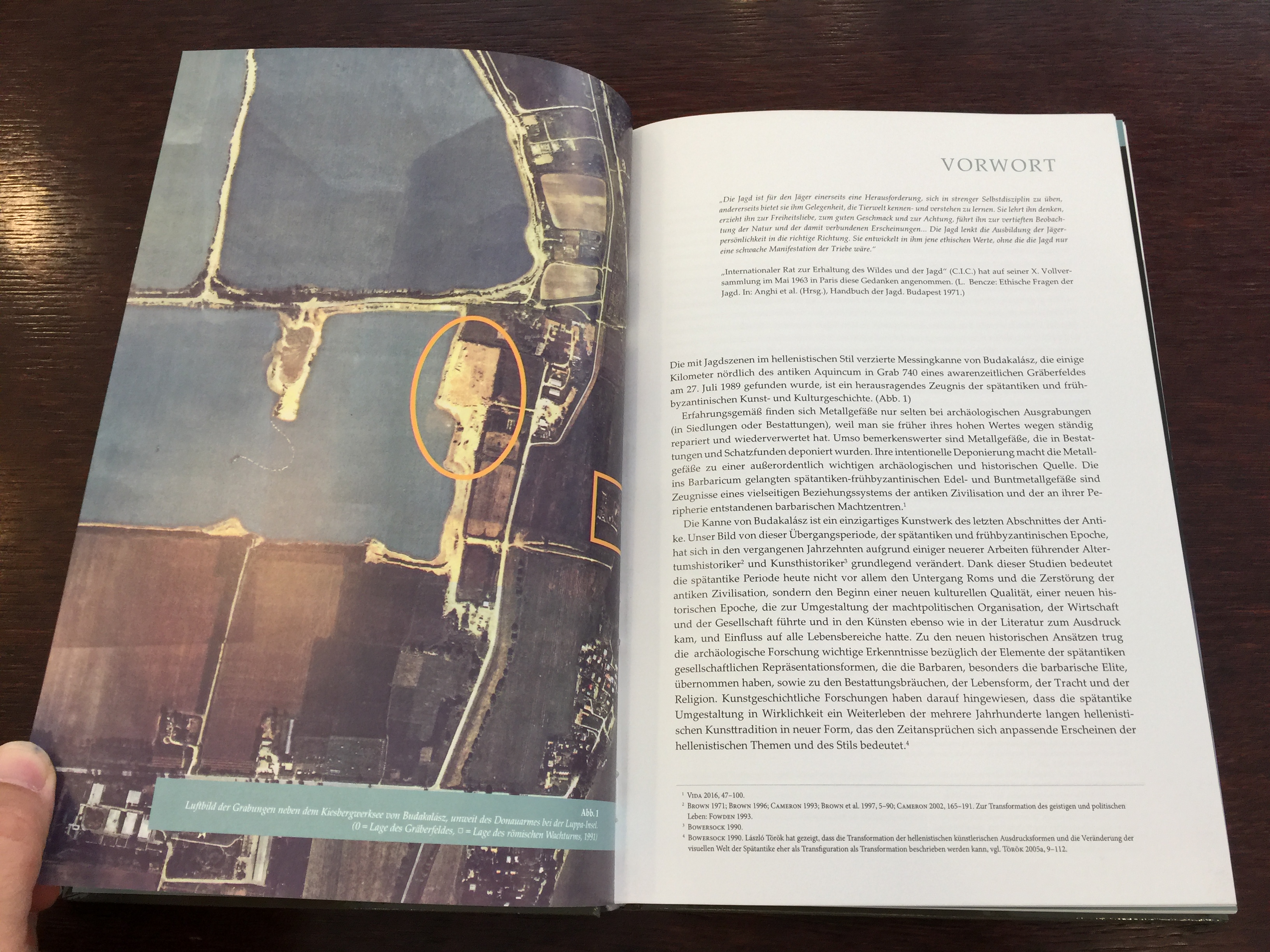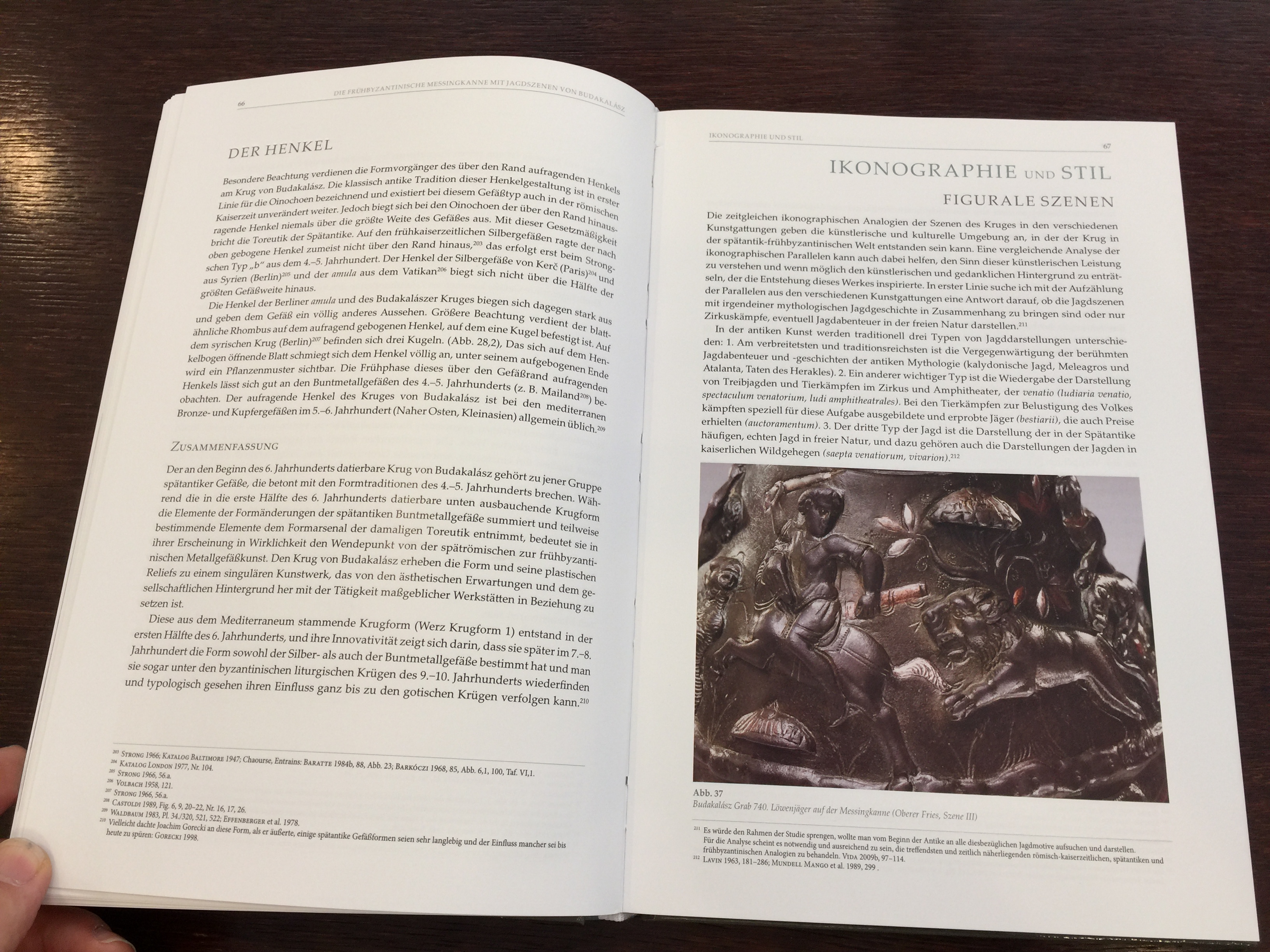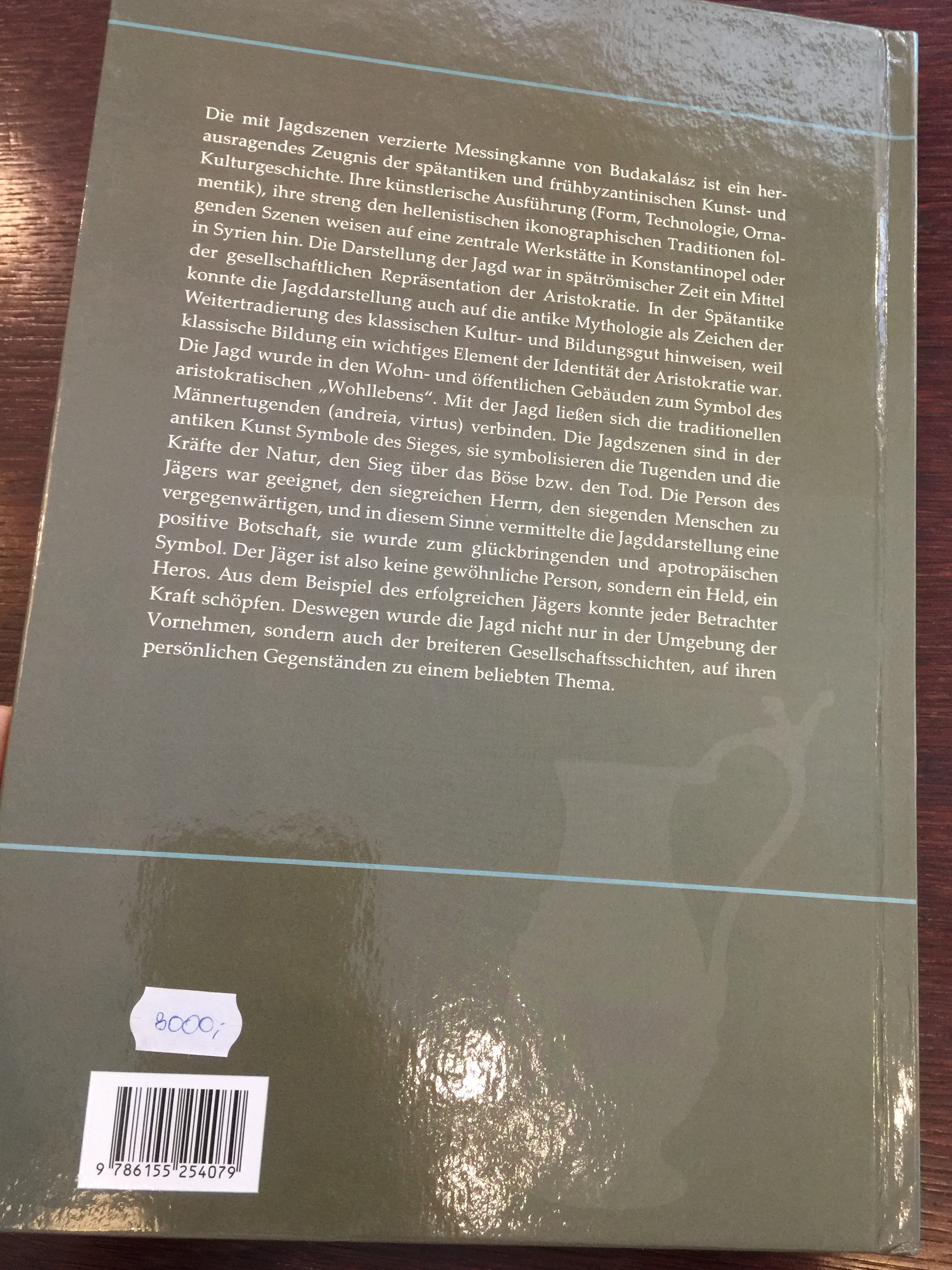Description
Die frühbyzantinische Messingkanne mit Jagdszenen von Budakalász (Ungarn) by Tivadar Vida / German language archaeological book - The late Byzantine brass jug with hunting scenes from Budakalász / Hardcover
Hardcover 2017
ISBN: 9786155254079 / 978-6155254079
ISBN-10: 6155254079
PAGES: 267
PUBLISHER: Ungarische Akademie der Wissemschaften
LANGUAGE: German
German Description:
Die mit Jagdszenen verzierte Messingkanne von Budakalász ist ein her-ausragendes Zeugnis der spätantiken und frühbyzantinischen Kunst- und Kulturgeschichte. Ihre künstlerische Ausführung (Form, Technologie, Orna-mentik), ihre streng den hellenistischen ikonographischen Traditionen fol-genden Szenen weisen auf eine zentrale Werkstätte in Konstantinopel oder in Syrien hin. Die Darstellung der Jagd war in spätrömischer Zeit ein Mit-tel der gesellschaftlichen Repräsentation der Aristokratie. In der Spätantike konnte die Jagddarstellung auch auf die antike Mythologie als Zeichen der Weitertradierung des klassischen Kultur- und Bildungsgut hinweisen, weil klassische Bildung ein wichtiges Element der Identität der Aristokratie war. Die Jagd wurde in den Wohn- und öffentlichen Gebäuden zum Symbol des aristokratischen „Wohllebens“. Mit der Jagd ließen sich die traditionellen Männertugenden (andreia, virtus) verbinden. Die Jagdszenen sind in der antiken Kunst Symbole des Sieges, sie symbolisieren die Tugenden und die Kräfte der Natur, den Sieg über das Böse bzw. den Tod. Die Person des Jägers war geeignet, den siegreichen Herrn, den siegenden Menschen zu vergegenwärtigen, und in diesem Sinne vermittelte die Jagddarstellung eine positive Botschaft, sie wurde zum glückbringenden und apotropäischen Symbol. Der Jäger ist also keine gewöhnliche Person, sondern ein Held, ein heros. Aus dem Beispiel des erfolgreichen Jägers konnte jeder Betrachter Kraft schöpfen. Deswegen wurde die Jagd nicht nur in der Umgebung der Vornehmen, sondern auch der breiteren Gesellschaftsschichten, auf ihren persönlichen Gegenständen zu einem beliebten Thema.
English Abstract:
In the framework of the project was realized a publication of the brass jug of Budakalász, wich is decorated with hunting scenes in relief and with silver and copper plate inlays. The Budakalász jug is an outstanding relic of Late Antique and Early Byzantine metalwork, offering new perspectives on Late Antique art, iconography, toreutics and the minor arts. The ornate, golden-hued jug from Byzantium had reached the Avars either as a gift or as part of war booty. The edited book offers an artistic, archaeological and archaeometrical assessment of the jug’s form, the composition of its material, its iconography and its decorative style set in the Late Antique artistic context. In addition to the determination of the jug’s manufacturing date (late 5th/early 6th century) and its workshop (in Constantinopel or Antioch), the author also examines the intellectual environment of the goldsmith and the social status of the patron/client, alongside an inquiry into how hunting was portrayed in Late Antique and Early Byzantine art and the symbolism of hunting scenes. Last section of the book is devoted to an overview of the Late Antique and Early Byzantine vessels made of copper and brass that reached the Avars, and of their social role in Barbarian society. Although their social function changed, it was still used by the elite and it thus offers insights into how Barbarian culture was affected by Antique civilisations.















































